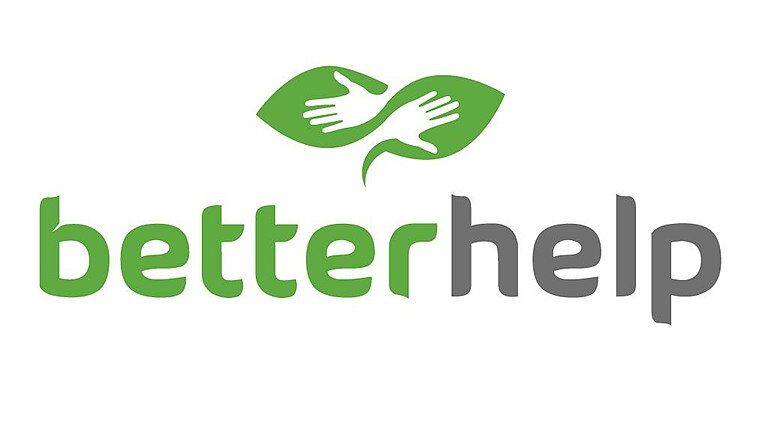
Introduction
Being a dad is a wonderful adventure filled with love, laughter, and the occasional mischievousness of our little ones. When it comes to discipline, we often find ourselves faced with moments where our kids do something that’s genuinely funny, but occasionally against house rules. In these situations, it’s important to strike a balance between maintaining order and embracing the joy of their innocent antics. By infusing discipline with a light touch, we can foster a positive connection with our children while imparting valuable life lessons.
Embracing the Laughter:
Children have an incredible ability to find humor in the simplest things. From their amusing observations to their unintentional hilarity, their infectious laughter can brighten any room. As dads, it’s important to embrace their sense of humor and recognize the positive side of their actions, even when discipline is necessary. By joining in their laughter, we create an atmosphere of understanding, showing our children that we appreciate their unique perspective on the world. Whether they’re telling a silly joke or unintentionally pulling off a funny prank, taking a moment to enjoy the humor can strengthen the bond between us and our kids.
When our children do something funny but inappropriate, it’s an opportunity to demonstrate that discipline isn’t always about being stern or serious. It’s a chance to show them that we can laugh together, even in moments of correction. By finding the funny side of their actions, we validate their sense of creativity and imagination. This validation allows us to guide them gently toward appropriate behavior while maintaining a lighthearted atmosphere. Embracing the laughter in disciplinary situations also helps our children develop a positive attitude towards discipline itself. They begin to associate discipline with an environment of love, understanding, and shared laughter, rather than solely with negativity or punishment.
The Role of Playful Discipline:
Discipline doesn’t have to be a solemn affair; it can be infused with playfulness to create a more engaging experience for both parent and child. By incorporating elements of fun into our disciplinary approach, we can effectively convey our expectations while fostering a sense of joy and cooperation. One effective method is setting up “fun rules” that turn routine tasks into playful challenges. For instance, transforming tidying up toys into a friendly race or making brushing teeth a silly song and dance routine. This way, we maintain authority while creating a positive and enjoyable environment.
Engaging in silly consequences can also be a powerful way to address misbehavior while diffusing tension. Instead of resorting to harsh punishments, we can come up with creative consequences that are directly related to the behavior in question. For instance, if our child is repeatedly forgetting to put away their bicycle, we can playfully suggest they become the “bike parking attendant” for the day, ensuring all family bikes are properly stored. By transforming consequences into light-hearted experiences, we not only address the behavior but also create memorable moments that reinforce the lesson.
Using humor as a teaching tool is another effective way to blend discipline and laughter. When our kids do something funny but inappropriate, we can gently explain why it’s not acceptable while injecting humor into the conversation. By finding a balance between seriousness and levity, we help them understand the consequences of their actions while maintaining a positive connection. For example, if our child draws on the wall with crayons, we can pretend to be amazed at their artistic skills but then express how sad we are that the walls aren’t an appropriate canvas. This approach allows us to communicate the lesson effectively while alleviating any potential embarrassment or shame.
Recognizing the Intent:
When our children do something out of line, it’s important to consider their intent behind the action. Were they intentionally trying to be humorous or playful, or was it a genuine mistake or lack of understanding? This distinction helps us respond in an appropriate and fair manner. For instance, if our child purposefully tells a harmless joke that may be considered cheeky, we can acknowledge their creativity and humor while explaining why it might not be appropriate in certain situations. However, if their actions were unintentional, such as accidentally spilling a glass of water while trying to perform a magic trick, we can focus more on teaching them about cause and effect rather than reprimanding them for the outcome.
By recognizing the intent, we show our children that we understand their perspective and validate their feelings. This builds trust and open communication, making it easier for them to accept and learn from the discipline. It also allows us to respond with empathy, tailoring our approach to each situation based on their intentions. Our children will feel heard and respected, fostering a stronger connection between us and enabling them to grasp the lesson in a more meaningful way.
Communication and Explanation:
While laughter lightens the disciplinary atmosphere, it’s important to effectively communicate and explain why certain behaviors are unacceptable. Our kids look to us for guidance and boundaries, and it’s our responsibility to ensure they understand the reasons behind the rules. When addressing misbehavior with a touch of humor, we should strike a balance between levity and clarity to avoid confusion.
By engaging our children in a conversation, we create an opportunity for mutual understanding. We can ask them questions to encourage reflection and critical thinking, guiding them to recognize the impact of their actions. For example, if they make a mess while trying to make breakfast, we can ask questions like, “What do you think happens when we leave cereal all over the floor? Do you think it might attract bugs?” By prompting them to consider the consequences, we help them develop a sense of responsibility and accountability.
Additionally, using age-appropriate language and concrete examples can aid in effective communication. Analogies, stories, or role-playing can make abstract concepts more relatable and memorable for our kids. We can create scenarios that mirror their actions, but with exaggerated outcomes, to illustrate the potential consequences. By explaining the lesson in a playful yet clear manner, we ensure our children understand the boundaries without feeling overwhelmed or disengaged.
Remember, the goal is not to discourage their sense of humor or creativity, but to channel it in a positive direction. By communicating and explaining our expectations with humor and clarity, we create an environment where discipline becomes an opportunity for growth, understanding, and shared laughter.
Leading by Example:
As dads, we play a crucial role in shaping our children’s behavior through our own actions and behaviors. Children are keen observers, and they often emulate what they see in their parents. Therefore, it’s important for us to lead by example and demonstrate the behavior we expect from them.
One way to incorporate humor into discipline is by using it to diffuse tense situations. When we encounter a challenging behavior, instead of immediately resorting to strict discipline, we can lighten the mood with a playful remark or a funny gesture. For example, if our child refuses to clean up their room, we can pretend to be overwhelmed by the mess and exaggerate our comedic frustration. By using humor in these moments, we show our children that humor can be a tool to handle frustration and diffuse conflicts in a positive way.
Consistency in our disciplinary approach is also essential. By consistently enforcing rules and expectations with a touch of humor, we establish a predictable framework that helps our children understand the boundaries and consequences. If we sometimes respond to funny misbehavior with laughter and other times with seriousness, it can confuse them and undermine the effectiveness of our discipline. Consistency ensures that our children can rely on us to respond in a fair and appropriate manner, which ultimately strengthens our bond and their understanding of acceptable behavior.
Tailoring Discipline to Individual Personalities:
Just as every child is unique, their response to discipline can vary based on their personality and temperament. Some children may be more sensitive, while others may thrive on laughter and playfulness. It’s important for us, as dads, to recognize and understand these individual differences and adjust our disciplinary approach accordingly.
For sensitive children, a gentle and reassuring approach may be more effective. When they do something funny but inappropriate, we can still acknowledge the humor while calmly explaining why it’s not acceptable. By focusing on the behavior rather than the child, we help them separate their actions from their identity, reducing any feelings of shame or embarrassment. This approach allows us to maintain a supportive and nurturing environment while addressing the behavior.
On the other hand, for children who respond well to humor, incorporating playfulness into discipline can be highly effective. Engaging in a silly consequence or using funny analogies can capture their attention and make the disciplinary message more memorable. For example, if they continuously forget to hang their backpack on the designated hook, we can playfully suggest that the backpack has a secret aversion to the floor and prefers “hanging out” with its hook friends. By framing the consequence in a humorous way, we encourage them to participate in the solution and find joy in following the rules.
Understanding our children’s personalities and adjusting our disciplinary approach accordingly demonstrates our attentiveness and respect for their individuality. By tailoring discipline to their needs, we create a supportive environment where discipline becomes a positive and personalized experience that nurtures their growth and development.
The Power of Time-outs:
Time-outs are a classic disciplinary technique used by many parents, and they can be enhanced with a touch of humor. Instead of simply placing our child in a designated time-out spot, we can make it engaging and amusing.
Creating a “silly corner” as a designated time-out space can add a lighthearted twist. We can decorate it with funny posters or cushions, making it a place where our child can reflect on their behavior while being surrounded by playful elements. This approach helps shift the focus from punishment to self-reflection, making time-outs more constructive and less intimidating.
Additionally, providing fun activities within the time-out area can keep our child engaged and occupied. We can include coloring books, puzzles, or a small basket of funny joke books. This way, they can enjoy themselves while still understanding the purpose of the time-out. It also prevents them from feeling isolated or resentful during the disciplinary process.
By transforming time-outs into opportunities for reflection and personal growth, we create an environment where our children learn to take responsibility for their actions while maintaining a positive connection with us. It reinforces the idea that discipline is not about isolating or shaming them but about fostering self-awareness and encouraging better choices.
Remember, the goal of discipline is not to suppress our children’s sense of humor but to guide them towards appropriate behavior. By infusing discipline with humor, we create an environment where laughter and discipline go hand in hand, allowing us to navigate the challenges of parenting with joy and love.
The Art of Redirection:
Sometimes, our children’s funny antics may stem from boredom or the need for attention. In such cases, redirection becomes a valuable tool in our disciplinary arsenal. Rather than solely focusing on correcting the behavior, we can redirect their energy and engagement towards more positive and productive activities.
By providing alternative outlets for their creativity and humor, we channel their energy into constructive endeavors. For example, if our child enjoys making funny faces during mealtime, we can encourage them to create a “funny face” photo album or suggest they put on a playful performance for the family after dinner. This way, we acknowledge and appreciate their sense of humor while guiding it towards appropriate outlets.
Engaging in shared activities can also be a powerful way to redirect their attention. Whether it’s playing a board game, building a fort, or embarking on a silly scavenger hunt, involving ourselves actively in their playtime allows us to bond with our children while steering their focus away from misbehavior. By providing meaningful and enjoyable experiences, we create an environment that encourages positive behavior and cultivates a deeper connection.
Using Humor to Strengthen Bonds:
Discipline is not solely about correcting behavior; it is also an opportunity to strengthen our bond with our children. When we incorporate humor into the disciplinary process, we create shared laughter and joyful memories that forge a deeper connection between us.
Sharing personal anecdotes from our own childhood or funny stories from our lives can help establish a sense of camaraderie. By letting our children see our vulnerabilities and relatability, they realize that we were once in their shoes, making mistakes and learning along the way. This shared experience bridges the generation gap and fosters a sense of understanding and empathy.
Additionally, humor can serve as an effective icebreaker during challenging conversations. When discussing a serious matter, injecting a moment of levity can relieve tension and create an open space for communication. By using humor strategically, we show our children that we are approachable, that we understand their perspective, and that we are willing to listen to them without judgment.
Furthermore, shared laughter creates lasting memories. When our children look back on their childhood, they will fondly recall the moments of laughter and connection they experienced with us. These positive memories lay the foundation for a strong and trusting relationship, where discipline becomes a shared journey rather than a one-sided imposition.
Patience and Forgiveness:
In the realm of discipline, it’s essential for us as dads to practice patience and forgiveness. Our children are constantly learning and growing, and they will undoubtedly make mistakes along the way. By approaching discipline with a mindset of patience and forgiveness, we create an environment that fosters growth, understanding, and resilience.
When our children repeat certain behaviors, it can be frustrating and testing of our patience. However, responding with anger or impatience may only exacerbate the situation. Instead, we can take a step back, breathe, and remind ourselves that it’s a learning process. By maintaining our composure, we model self-control and teach our children the importance of patience in dealing with challenging situations.
Forgiveness is a vital component of discipline. It allows us to move forward from a disciplinary incident while reinforcing the idea that mistakes can be learning opportunities. When our children genuinely understand the impact of their actions and show remorse, extending forgiveness demonstrates our unconditional love and support. It helps them internalize the importance of taking responsibility for their behavior and making amends.
By practicing patience and forgiveness, we create a safe space for our children to make mistakes, learn from them, and grow. This approach also strengthens our relationship, as our children see us as understanding and forgiving figures in their lives. Discipline becomes a tool for growth and character development rather than a source of fear or resentment.
Conclusion:
Dads, disciplining our kids when they do something genuinely funny can be a delicate balancing act. By embracing the laughter, using humor as a teaching tool, and infusing discipline with a light touch, we create an environment that nurtures growth, understanding, and connection. Remember to lead by example, tailor discipline to individual personalities, and communicate with clarity and empathy.
Incorporating playfulness and redirection allows us to guide our children towards positive behavior while still appreciating their sense of humor. Using humor strategically strengthens our bond, fosters open communication, and creates lasting memories. And finally, let’s practice patience and forgiveness, recognizing that discipline is a journey of growth and learning for both us and our children.
So, fellow dads, let’s embark on this joyful journey of playful discipline, one laughter-filled lesson at a time! Together, we can create a nurturing environment where discipline and humor go hand in hand, shaping our children into compassionate, resilient, and joyful individuals.
















